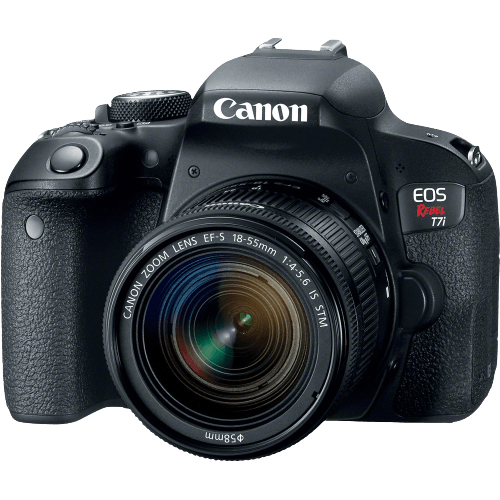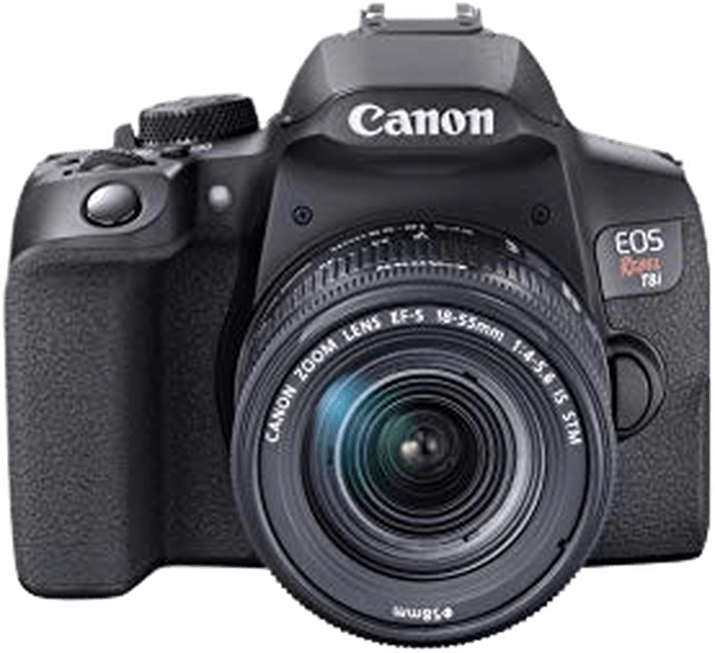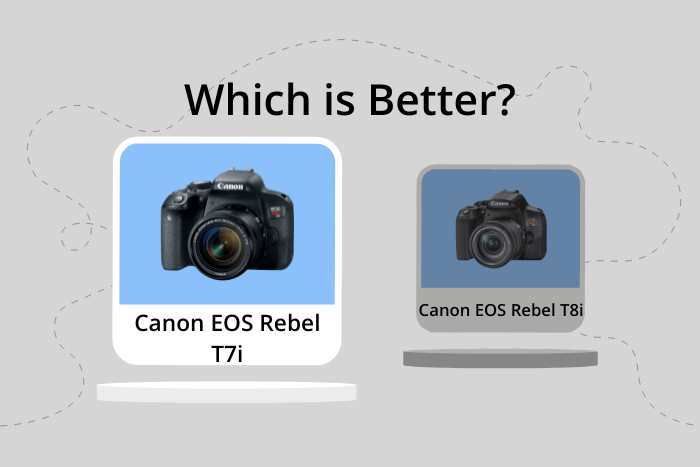Canon EOS Rebel T7i / 800D vs EOS Rebel T8i / 850D Comparison
Canon EOS Rebel T7i / 800D

Canon EOS Rebel T8i / 850D

The Canon EOS Rebel T7i / 800D emerges as the winner with a score of 64/100, while the Canon EOS Rebel T8i / 850D trails behind with a score of 59/100. Both cameras are DSLR types and share similar dimensions, with the T7i measuring 131 x 100 x 76mm and the T8i at 131 x 103 x 76mm.
The T7i has a few advantages, including a slightly higher score and a heftier weight of 532g compared to the T8i’s 515g. This could make the T7i feel more durable and sturdy in the hands of photographers. The T7i was also released in 2017 with a launch price of $779.
On the other hand, the T8i, released in 2020, has a lower launch price of $750, making it more budget-friendly. Additionally, its lighter weight might be preferred by those who prioritize portability and ease of carrying.
Taking all factors into account, the T7i is a better camera due to its higher score, while the T8i offers a more affordable option with a lighter build.
Canon EOS Rebel T7i / 800D vs EOS Rebel T8i / 850D Overview and Optics
The Canon EOS Rebel T7i / 800D outperforms the Canon EOS Rebel T8i / 850D in optics, scoring 64/100 compared to the T8i’s 57/100. Both cameras share common specifications, including 24 megapixels, CMOS sensor type, APS-C sensor size, Canon EF/EF-S lens mount, and lack of image stabilization. However, the T7i has a better DXOMARK sensor score of 79, while the T8i scores 58.
The T7i’s higher DXOMARK sensor score indicates superior image quality, largely due to its Digic 7 processor. This processor contributes to better low-light performance, color depth, and dynamic range. Thus, the T7i provides more accurate and detailed images in various lighting conditions.
On the other hand, the T8i has a faster shooting speed (7.5 fps) compared to the T7i (6 fps), thanks to its Digic 8 processor. This advantage allows the T8i to capture fast-moving subjects with greater ease. Nonetheless, this improvement in shooting speed is not enough to compensate for the lower image quality provided by the T8i’s sensor.
In terms of optics, the Canon EOS Rebel T7i / 800D is the superior camera due to its higher DXOMARK sensor score and better overall image quality. However, the Canon EOS Rebel T8i / 850D offers a faster shooting speed, which may appeal to users who prioritize capturing fast action. Ultimately, photographers must weigh their specific needs and preferences to determine which camera best suits their requirements.
Canon EOS Rebel T7i / 800D vs EOS Rebel T8i / 850D Video Performance
The Canon EOS Rebel T8i / 850D outperforms the Canon EOS Rebel T7i / 800D in video capabilities, with a video score of 83/100 compared to the T7i’s 70/100. Both cameras share some common specifications, such as a maximum video frame rate of 60fps and built-in time-lapse functionality. However, the T8i has distinct advantages that contribute to its higher score, while the T7i has limited benefits in this category.
The T8i’s primary advantage is its 4K video resolution, which offers a significant improvement over the T7i’s Full HD resolution. With the T8i’s maximum video dimensions of 3840 x 2160, users can capture much more detailed and high-quality footage compared to the T7i’s 1920 x 1080 dimensions. This difference in resolution is a key factor in the T8i’s higher video score.
In contrast, the T7i struggles to compete with the T8i in video capabilities. While both cameras have a maximum video frame rate of 60fps, the T7i’s lower video resolution limits its overall performance. There are no specific areas where the T7i surpasses the T8i in terms of video capabilities.
Considering these factors, the Canon EOS Rebel T8i / 850D is the superior choice for video performance due to its 4K resolution and higher video score. The Canon EOS Rebel T7i / 800D falls short in comparison and does not offer any unique advantages in this category. As a result, those seeking better video capabilities should opt for the T8i over the T7i.
Canon EOS Rebel T7i / 800D vs EOS Rebel T8i / 850D Features and Benefits
The Canon EOS Rebel T7i / 800D and the Canon EOS Rebel T8i / 850D both have a feature score of 70/100. Since the scores are equal, there is no clear winner in terms of features. Both cameras share several specifications, making them quite similar in terms of functionality.
Common specifications between the T7i / 800D and the T8i / 850D include a 3-inch screen size, a screen resolution of 1,040,000 dots, a touchscreen, a flip screen, WIFI, and Bluetooth connectivity. These features make both cameras user-friendly and suitable for various photography needs.
The T7i / 800D stands out due to its GPS feature, which the T8i / 850D lacks. This advantage allows the T7i / 800D to provide geotagging capabilities, making it more versatile and useful for travel photography or location-based projects.
On the other hand, there are no specific features where the T8i / 850D outperforms the T7i / 800D. Both cameras are remarkably similar, and the lack of a GPS feature in the T8i / 850D does not significantly hinder its performance.
Given their equal feature scores and the shared specifications, the Canon EOS Rebel T7i / 800D and the T8i / 850D are comparable cameras. The T7i / 800D holds a slight edge with its GPS functionality, but the overall performance and capabilities of both cameras are quite similar. Users should consider their specific needs and preferences when choosing between these two cameras.
Canon EOS Rebel T7i / 800D vs EOS Rebel T8i / 850D Storage and Battery
The Canon EOS Rebel T8i / 850D outperforms the Canon EOS Rebel T7i / 800D in storage and battery, scoring 35/100 compared to 29/100. Both cameras have a single memory card slot and accept SD, SDHC, and SDXC (UHS-I compatible) memory cards. They also share the same battery type, LP-E17, but do not support USB charging.
The T8i / 850D has a longer battery life of 800 shots, making it superior to the T7i / 800D, which offers 600 shots. This advantage allows users to take more photos before needing to recharge or replace the battery.
The T7i / 800D does not have any significant advantages in storage and battery over the T8i / 850D. The T8i / 850D’s longer battery life makes it a better choice for those who prioritize extended shooting sessions.
Canon EOS Rebel T7i / 800D vs EOS Rebel T8i / 850D Alternatives
Still not sure which camera is right for you? These related camera comparisons may inspire you:

